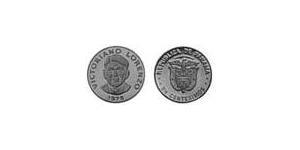| This article needs additional citations for verification. (October 2007) |

Victoriano Lorenzo is considered one of the great heroes of Panamanian history, although his story and motives are sometimes debated by different sectors in his homeland. Born when the isthmus was still a part of Colombia, which was a part of the former Gran Colombia, Lorenzo died during the Thousand Days War shortly after which Panama gained its separation after many different attempts dating back to 1830.
Born sometime around the 1870s to poor campesinos in what is now the province of Cocle, Lorenzo was considered a Cholo, of predominantly indigenous blood with drops of Europe and Africa but with a more Hispanic cultural background.
An elected official outside of the provincial capital of Penonome, Lorenzo was quick to take arms at the advent of the Thousand Days War in alliance with the Liberals led in part by Panamanian patriot Belisario Porras. He led troops in a Pacific coast skirmish which killed a conservative mayor and garnered him arms from the Liberals. He commanded his troops into battle in Aguadulce in January 1902, in which over 750 troops were killed or wounded on both sides, and his Liberal allies claimed 700 prisoners. Later that year, when hundreds of Liberal troops came from Nicaragua, Lorenzo sent his secretary, Papi Aizpuru, to meet them.
Becoming one of the most wanted men by the Colombian central government,[citation needed] General Lorenzo and his wife, Lorenza Ibarra, led his soldiers to a base in the mountains known as La Trinchera, where he turned to guerrilla war to advance his cause, and averted many assassination attempts by white Conservatives and traitors.
The end of the Thousand Days War resulted in a defeat for the Liberals. General Benjamin Herrera, who had previously fought alongside Lorenzo in Aguadulce, signed a peace treaty with the Conservatives. Victoriano Lorenzo and his followers refused to give up their arms and insisted on continuing their struggle. After Herrera ordered his arrest, Lorenzo was lured into an ambush. Captive, he was rushed through court proceedings and prepared for execution. Victoriano Lorenzo was executed on May 15, 1903, within six months from Panama's separation from Colombia. He is buried in the Amador Cemetery.[1]
A hero during his day, Lorenzo became a national legend in Panama. But questions remain, both about Lorenzo's ultimate motives and his death. Lorenzo is considered by some to have waged a war that was ultimately with separation in mind, while others see it as a class war against white elites.
Today, several monuments and plaques exist in Cocle and Veraguas in Lorenzo's honor, and official events celebrating his life and remembering his execution are held both at the commemoration of his death and on the November 3 Separation Day. Panama's controversial figure Hugo Spadafora organized a contingent of his countrymen to fight against Nicaragua's Somoza regime in 1976 known as the Victoriano Lorenzo Brigade.









